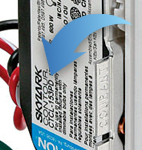
Explore Knowledge Articles
Network Requirements for Lutron Residential Systems
This article provides the necessary ports and URLs for Lutron residential systems to operate effectively. While most networks do not need special configurations for these devices to work correctly, firewalls can sometimes necessitate adjustments to ensure proper connectivity. Ensuring the ports and URLs listed in this article are accessible is critical.
Note: The Connect Bridge requires that the Processor use Telnet on port 23. Using Device IP to change the Telnet port of the processor will break the integration with the Connect bridge.
Router Settings
The Connect Bridge, Caséta Smart Hub, Main Repeater, and Processors make outbound connections to various servers for things like application remote access and firmware updates.
Most networks will not require special configuration for these connections to be established however when dealing with a restricted network (normally found in a corporate environment) some changes may need to be made by the network administrator.
Review the settings below to ensure proper system connectivity with the mobile app:
- Enable: Bonjour, mDNS, multicast
- Disable: QoS, IGMP Snooping
- IPV4 must be enabled for Connect Bridges, RadioRA 2, and HomeWorks QS.
- Note: Unregistered Multicast must be allowed for the Processors to communicate with each other.
Ports
Port settings are not always adjustable and the ISP may need to be involved to confirm that these ports are not blocked. Since no inbound connections are being made, no ports will need to be forwarded.
Outbound
- 80 (TCP)
- 123 (UDP)
- 443 (TCP)
- 8883 (TCP)
- 7443 (TCP)
Inbound
Do not use port forwarding/triggering. This does not help communication and can often be detrimental to the network.
Local Network
- 22 (SFTP)
- 23 (TCP)
- 1900 (UDP multicast)
- 4548 (TCP)
- 5353 (UDP multicast)
- 8081 (TCP)
- 8083 (TCP)
RadioRA 3 and Homeworks QSX Network Specific Requirement
RadioRA 3 and Homeworks QSX processors vary slightly from the settings used by other Lutron residential systems. While most of the above applies to them, these two systems also recognize and use IPV6 Protocols.
Reference Connecting to HomeWorks QSX Processors (starting on page 4) of the HWKS 16.0+ NETWORKING GUIDE APP NOTE (048760) for additional network requirements.
URLS
updates.lutron.com
lutron.broker.xively.com
firmwareupdates.lutron.com
s3.amazonaws.com


